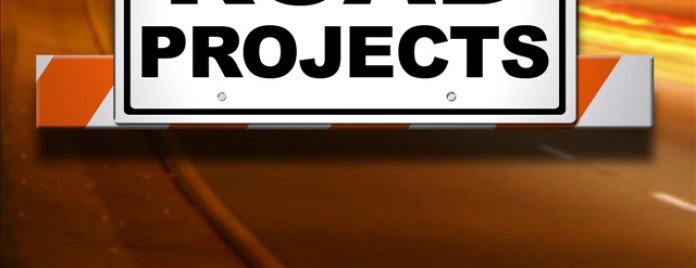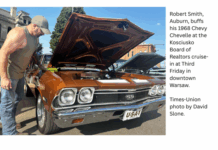The process of addressing the railroad crossing at Center Street began at the Warsaw Board of Public Works and Safety meeting Friday morning.
The board chose a consultant, American Structurepoint, to conduct a feasibility study on moving Center Street traffic over or under the Norfolk Southern railroad line.
The cost of the study is $63,500.
Warsaw Mayor Joe Thallemer said the city was looking at doing a feasibility study for the possible grade separation along the north/south railroad line. He said he and City Planner Jeremy Skinner have talked “a lot about this and I think what we are trying to accomplish with it is to see if there is an option. We don’t know that. That’s the hard part about trying to solve a problem if you don’t have a good idea of what your options are. This is a very complex project.”
He said they met with Norfolk Southern, Indiana Department of Transportation and Goshen’s engineer about projects that they did. Making the grade separation more complex is the proximity to Ind. 15.
“Whatever solution might be proposed, I’m sure it’s not something we can anticipate without professional engineering assistance. We’re not sure what we’re going to get out of this. We just don’t know. But we have to discover what our options are before we can either make a recommendation or decide that this is something that’s just not engineering or cost effective to do,” Thallemer said.
Skinner said that over the last six months, he, Thallemer and city engineer James Emans “have been exploring the opportunity to look at doing a feasibility study.” After consultation with others who did similar projects, he said they came away with a list of three consultants that “could do the job we wanted to see done.” After eliminating a consultant out of Chicago, and interviewing the remaining two, Skinner and Emans thought American Structurepoint “was in a better position to answer the questions we felt needed to be answered.”
The end goal of the study, Skinner said, is to provide the city with answers it needs to move forward. With those answers, the city can make a decision on how to go forward. He said that decision will be based on money, engineering feasibility and cross benefit.
“There are a lot of steps to go through. We’ll embark on those steps over the next six months to hopefully come up with the answers that we need to make a good decision in moving forward. Beyond that, you have to have the funding,” Skinner said.
Even if the feasibility study comes back and the city has the answers it needs, Skinner said there will still be a lot of work to be done after that before any project can come to fruition.
“This is the beginning stage of a long project that we hope at the end of the six months we’ll have the answers we need to know to make an educated decision moving forward on whether or not this is even a possibility,” Skinner said.
Thallemer emphasized the cost estimate will be a part of the feasibility study and will be a “big deciding factor.”
Emans agreed the study is needed so the city knows what it is up against.
“The proximity of (Ind.) 15 to the north/south rail, the east/west rail that goes through near downtown, that makes it very complex three-dimensionally,” Emans said. “If you think about lowering any of these roads somewhere around 20 feet clear underneath these rails, the impact to the surrounding area is large. So trying to understand what’s the most feasible alignment, location … We’ve got to do this kind of study to come up with those answers. It’s not the design but the consultant will look at all of that.”
Thallemer said the city was “nudged” to do the study in the spring when it met with INDOT and Norfolk Southern about railroad crossing safety improvements.
“The discussion turned to closing down some crossings to minimize the safety problems. They know there’s a safety issue, and hence they’ve come up with close to $2 million to improve five of those crossings, but, in return, they’re interested in closing down a few of those crossings. We just made it clear that we can’t do that right now. But potentially, if we had a solution, then maybe it makes sense to look at some of those crossings. But just putting some gates up doesn’t solve our concerns of getting emergency personnel back and forth across the street, or under the tracks or over the tracks, or however we’re going to do it,” Thallemer said.
He said everyone came out of that spring meeting with the idea that the city needs to look into this.
“It’s the beginning stage of a long process,” Skinner said.
(Story By The Times Union)





